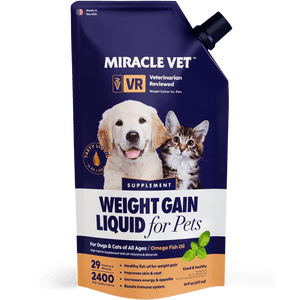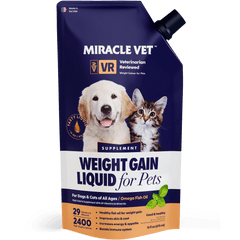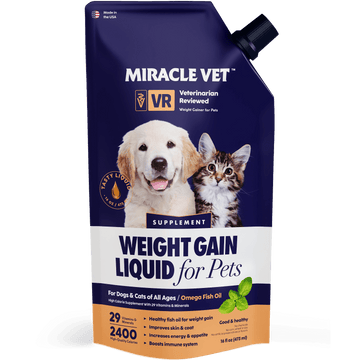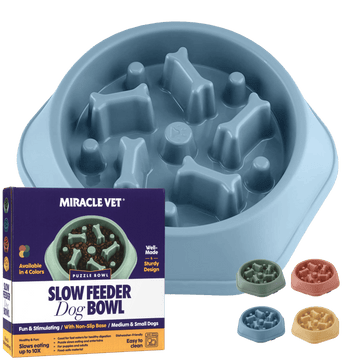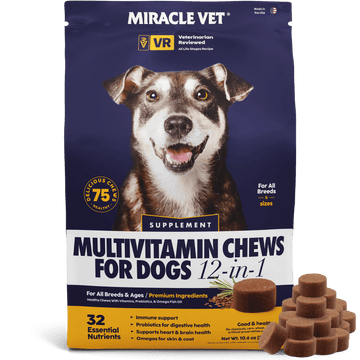Chronic kidney disease (CKD) is a common condition in older dogs and cats. It affects the kidneys’ ability to filter waste and regulate bodily functions. It is a progressive disease that does not currently have a cure, making early detection important so you and your veterinarian can create a well-planned treatment strategy. Careful management can slow the disease’s progression and improve your pet’s quality of life.
This guide provides an overview of chronic kidney disease in pets — what it is, how it’s diagnosed, common signs and causes, available treatment options, and practical strategies for long-term management.
What is chronic kidney disease in pets?
Chronic kidney disease refers to the gradual loss of renal (kidney) function over time. As the kidneys become less efficient, waste products like urea and creatinine build up in the bloodstream. While your pet’s kidneys may continue to produce urine, they become less effective at removing toxins.
CKD is especially common in older animals. It often develops slowly and with subtle signs that can be mistaken for normal aging. Senior cats and dogs are particularly at risk, and some breeds are genetically predisposed to kidney issues, including Persian cats and Doberman Pinschers.
The kidneys play a vital role in filtering waste, regulating electrolytes (like sodium and potassium) in the body, creating hormones that control blood pressure, and supporting red blood cell production. When kidney function declines, all these systems are affected.
Causes and risk factors of CKD
There are several possible underlying causes of CKD in pets, including:
- Congenital conditions, such as polycystic kidney disease
- Chronic infections, like pyelonephritis or repeated urinary tract infections
- High blood pressure or diabetes, which damage blood vessels in the kidneys
- Toxins or long-term use of certain medications
- Dehydration or poor nutrition
Age is the most common risk factor because kidney tissue naturally wears down over time. Diets high in phosphorus, limited water intake for prolonged periods, or underlying illnesses can also increase the risk of renal disease developing or progressing.
Recognizing signs and symptoms of chronic kidney disease
Early signs of CKD are often subtle, and it is easy to mistake them with signs of normal aging. However, spotting these changes early is critical for effective management.
Common early signs in pets include:
- Increased thirst and urination
- Weight loss
- Poor coat condition
- Decreased appetite
- Lethargy or reduced activity
Pets in later stages of CKD may experience:
- Vomiting or diarrhea
- Dehydration
- Bad breath
- Mouth ulcers
- Anemia (pale gums, weakness)
Cats may groom excessively or act more withdrawn, while dogs may become less playful or more easily fatigued. You should call your vet if you notice any sudden changes in urination, loss of appetite, or behavior.
Diagnosing chronic kidney disease in pets
Veterinarians diagnose CKD using a combination of clinical signs, lab tests, and imaging.
Common veterinarian diagnostic tools include:
- Blood tests to measure levels of serum creatinine, blood urea nitrogen (BUN), and SDMA (an early marker of kidney decline)
- Urinalysis to assess urine concentration and detect protein levels
- Urine sample to determine the protein-to-creatinine ratio (UPC), evaluating urine protein loss through the kidneys
- Blood pressure measurement, since hypertension can both cause and worsen kidney disease
- Ultrasound or X-rays, which may reveal structural kidney abnormalities
These tests help determine the stage of kidney disease using IRIS (International Renal Interest Society) guidelines, which classify CKD from stage 1 (early) to stage 4 (advanced). Your veterinarian will use the results of blood tests and other analyses to figure out the stage of disease and create the best course of treatment for your pet.
Treatment and management of CKD
Chronic kidney disease in pets cannot be reversed, but effective management can slow progression and help maintain their quality of life. Treatment plans vary based on the stage of the disease, clinical signs, and your pet’s overall health.
Medications and supplements
Veterinarians may prescribe:
- Phosphate binders, to control high phosphorus levels
- Potassium supplements, if your pet has low potassium levels
- Blood pressure medications, such as ACE inhibitors
- Erythropoiesis-stimulating agents, to treat anemia
- Appetite stimulants, if your pet isn't eating
Your vet may recommend adding a high-calorie supplement to your pet’s diet. With supplements like this, be sure to monitor suitably low protein and phosphorus levels. Dietary supplements can help pets with CKD maintain or regain weight, especially if they are struggling with appetite or muscle loss.
Fluid therapy
Fluids are critical for supporting kidney function. In advanced cases, pets may need subcutaneous fluids administered at home to prevent dehydration and flush toxins. It is important to make sure they have constant access to fresh water.
Nutritional management
Diet plays a key role in managing CKD. Special therapeutic diets are low in:
- Phosphorus, to reduce mineral buildup
- Protein, to decrease nitrogenous waste
- Sodium, to support blood pressure regulation
These diets are also enriched with omega-3 fatty acids and antioxidants to reduce inflammation. Your veterinarian may recommend prescription diets formulated specifically for dogs or cats with kidney disease.
Monitoring and ongoing care
CKD requires regular monitoring of:
- Serum creatinine and SDMA levels
- Urine concentration and protein loss
- Blood pressure
- Weight and appetite changes
Routine follow-ups allow the care plan to be adjusted in real time and help avoid complications.
Staging and prognosis of CKD
The IRIS staging system provides a standardized framework for assessing the severity of CKD. The disease is staged based on serum creatinine levels, proteinuria, and blood pressure.
Sub-staging is done using:
- Protein levels in urine (proteinuria or non-proteinuria)
- Blood pressure (normotensive or hypertensive)
This allows for targeted treatment strategies based on each pet’s specific profile.
Prognosis depends on the stage of CKD, how early it’s detected, and how well it is managed. Some pets live for months or even years after diagnosis with appropriate treatment. With early detection and consistent care, many pets can continue to enjoy a good quality of life and share more time with their families.
Special considerations
Gastrointestinal symptoms
CKD often causes gastrointestinal distress due to toxin buildup. Pets may vomit, experience diarrhea, or show signs of nausea or constipation. These symptoms can lead to further weight loss and dehydration. Managing GI issues may require anti-nausea medication, appetite stimulants, or adjusting the diet.
Anemia and fatigue
Chronic kidney disease in pets often leads to anemia because the kidneys produce less erythropoietin, which is an essential hormone for red blood cell production. This can result in pale gums, weakness, and low energy. Vets may prescribe iron supplements or erythropoietin injections to manage these symptoms.
Hypertension
High blood pressure can both cause and result from kidney damage. It’s a common complication that accelerates disease progression. Pets with CKD should have their blood pressure monitored regularly, and they may need medication to keep it within a safe range.
Supporting your pet at home
Caring for a pet with CKD requires adjustments and patience. Here’s how you can help:
- Keep your pet hydrated with clean water and moisture-rich food
- Feed only prescribed kidney diets and avoid treats high in phosphorus or protein
- Administer medications and fluids as directed by your veterinarian
- Monitor symptoms, including changes in appetite, energy, urination, or vomiting
- Regular vet visits to update the treatment plan
Providing a calm, clean, and predictable home environment helps reduce stress and improves your pet’s well-being.
Lifestyle modifications and quality of life
As your pet’s disease progresses, lifestyle changes can make a major difference in comfort and longevity. These may include:
- Adding soft bedding for arthritic or weak pets
- Elevating food and water bowls
- Feeding smaller meals more frequently
- Offering low-sodium broths to encourage drinking
- Adjusting exercise based on energy levels
Quality of life assessments can guide difficult decisions about end-of-life care. Compassionate veterinary teams can help you determine when comfort-focused care or euthanasia may be appropriate.
Conclusion
Chronic kidney disease in pets is a serious condition, but with early diagnosis and consistent care, you give your pet the best chance at living comfortably for months or even years after diagnosis. Understanding the signs, following your veterinarian’s recommendations, and staying vigilant with diet, hydration, and regular check-ups are the foundations of good CKD management.
By actively supporting your pet through every stage of the disease, you can preserve their quality of life and continue sharing meaningful time together.

